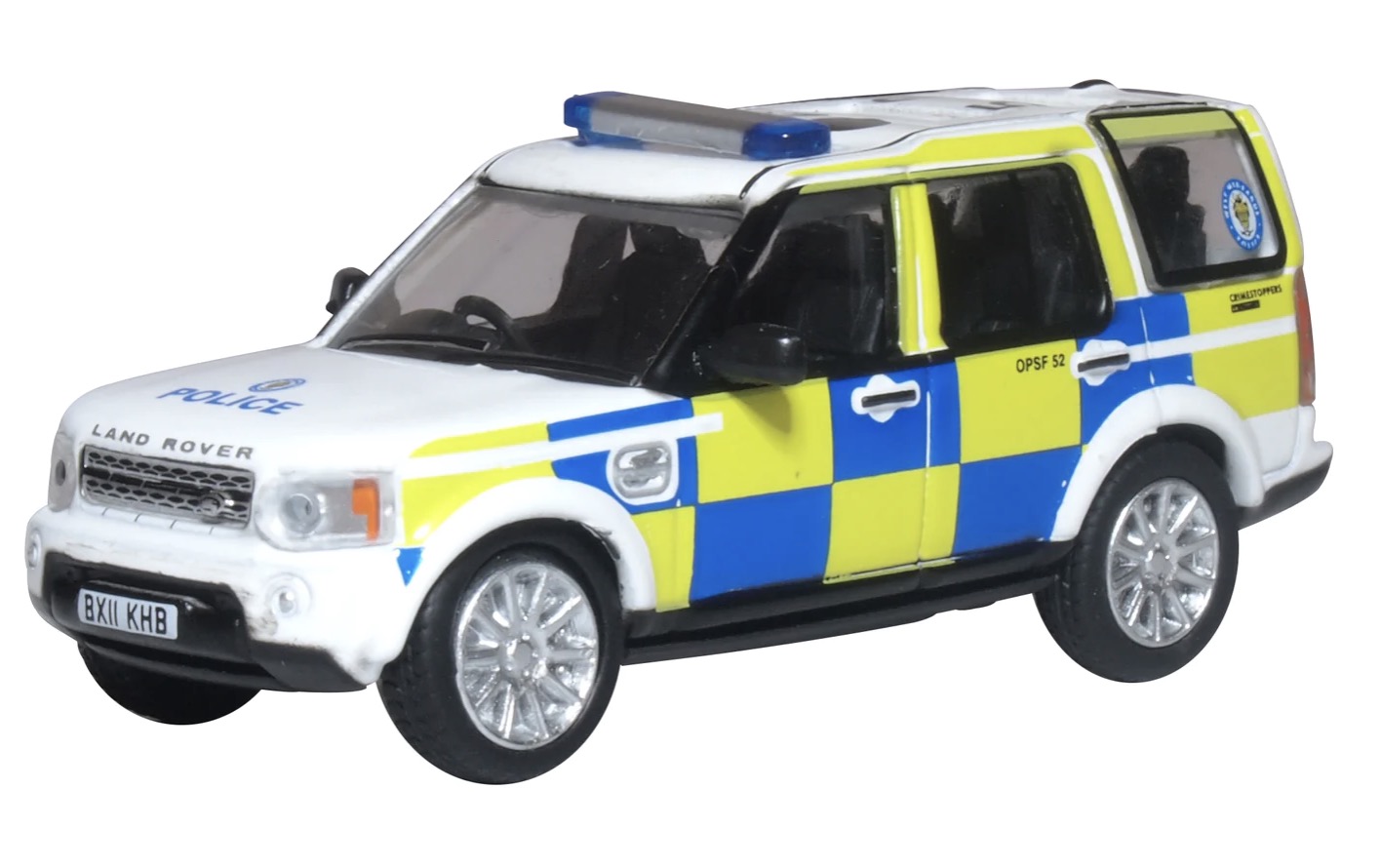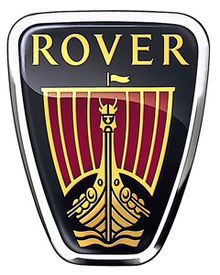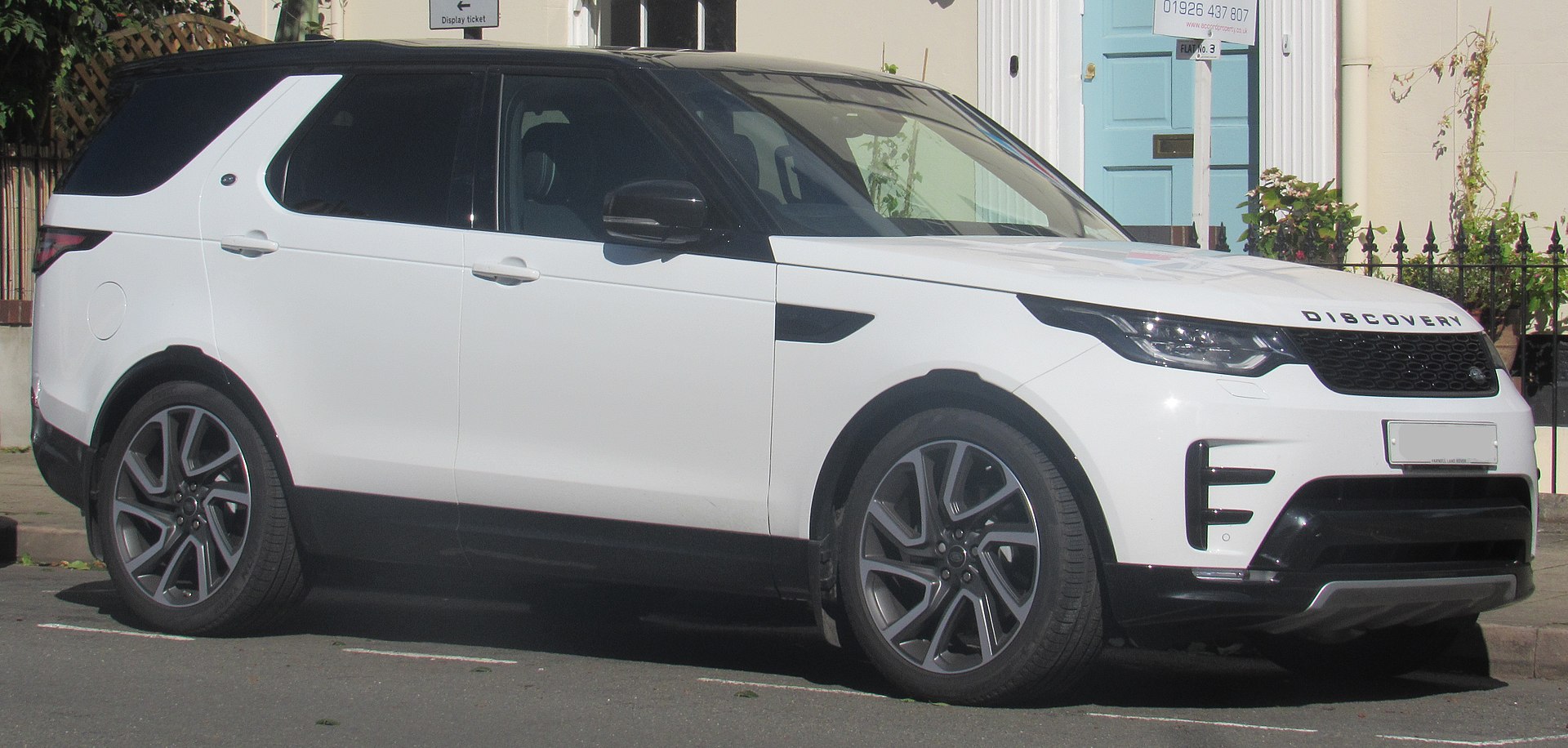Oxford Diecast - NDIS006 - Automobile, Land Rover, Discovery - Police Dept - BX11 KHB
| Production Type | Announced |
| Stock Number | NDIS006 |
| Original Retail Price | £7.05 |
| Brand | Oxford Diecast |
| Manufacturer | Oxford Diecast |
| Body Style | Oxford Diecast Land Rover Discovery |
| Image Provider's Website | Link |
| Prototype Vehicle | Automobile, Land Rover, Discovery (Details) |
| Road or Company Name | Police Dept (Details) |
| Reporting Marks | West Midlands |
| Road or Reporting Number | BX11 KHB |
| Paint Color(s) | White with Yellow & Blue Checker Pattern |
| Print Color(s) | Blue & Black |
| Item Category | Vehicles |
| Model Type | Automobile |
| Model Subtype | Land Rover |
| Model Variety | Discovery |
| Prototype Region | Europe |
| Prototype Era | NA Era V: Modern Diesel (1979 - Present) |
| Years Produced | 1989 - Present |
| Scale | 1/148 |
Specific Item Information:
Our model Discovery 4, registered BX11 KHB, is based on the upgraded vehicle which Land Rover introduced in 2009, designed by their chief designer, Gerry McGovern. By 2011, the year of our model, Land Rover had introduced improvements, mostly mechanical with emphasis on engines and gearboxes, including an upgraded 3.0L engine – one TDV6 option and the second the SDV6 engine and with a further choice of GS or XS trim. The interior had also been upgraded with contemporary luxury and technological refinements.
Our model Discovery 4, registered BX11 KHB, is based on the upgraded vehicle which Land Rover introduced in 2009, designed by their chief designer, Gerry McGovern. By 2011, the year of our model, Land Rover had introduced improvements, mostly mechanical with emphasis on engines and gearboxes, including an upgraded 3.0L engine – one TDV6 option and the second the SDV6 engine and with a further choice of GS or XS trim. The interior had also been upgraded with contemporary luxury and technological refinements.
Against this background, our 1:148 scale vehicle is a replica of that used by West Midlands Police who must have loved the high powered and comfortable Discovery. Decorated in white with the bright blue and yellow chequered sides, the white roof has the Police vehicle number printed in black to aid visibility from the air. The SDV6 GS marque is printed in silver on the back alongside the Land Rover badge. Note the West Midlands Police insignia on the rear side windows and also on the bonnet. Additional detailing on the bodywork includes the contemporary Crimestoppers 0800 telephone number, the orange and yellow POLICE markings under the rear window and the POLICE lightbar on the front of the roof sprayed silver and blue.
Our model Discovery 4, registered BX11 KHB, is based on the upgraded vehicle which Land Rover introduced in 2009, designed by their chief designer, Gerry McGovern. By 2011, the year of our model, Land Rover had introduced improvements, mostly mechanical with emphasis on engines and gearboxes, including an upgraded 3.0L engine – one TDV6 option and the second the SDV6 engine and with a further choice of GS or XS trim. The interior had also been upgraded with contemporary luxury and technological refinements.
Against this background, our 1:148 scale vehicle is a replica of that used by West Midlands Police who must have loved the high powered and comfortable Discovery. Decorated in white with the bright blue and yellow chequered sides, the white roof has the Police vehicle number printed in black to aid visibility from the air. The SDV6 GS marque is printed in silver on the back alongside the Land Rover badge. Note the West Midlands Police insignia on the rear side windows and also on the bonnet. Additional detailing on the bodywork includes the contemporary Crimestoppers 0800 telephone number, the orange and yellow POLICE markings under the rear window and the POLICE lightbar on the front of the roof sprayed silver and blue.
Prototype History:
Land Rover Discovery, also frequently just called "Disco" in slang or popular language, is a series of medium to large premium SUVs, produced under the Land Rover marque, from the British manufacturer Land Rover (becoming Jaguar Land Rover in 2013). The series is currently in its fifth iteration (or generation, according to the manufacturer), the first of which was introduced in 1989, making the Discovery the first new model series since the launch of the 1970 Range Rover – on which it was based – and only the third new product line since the conception of the Land Rover (vehicle and brand) by Rover in 1948. The model is sometimes called influential, as one of the first to market a true off-road capable family car.
The initial Discovery was essentially created as a more affordable design fork of the standard wheelbase Range Rover of the time. Although positioned below the latter in the company's line-up, the vehicle was both longer and higher, offered more room in the back, and optionally also more seats. Space utilization became more sophisticated in later iterations, but the series keeps offering seats for seven occupants.
The second Discovery (1998) was called the Series II, and though featuring an extended rear body, was otherwise an updated face-lift, which carried on the 100 inch wheelbase (2.54 m) frame and rigid, live front and rear axles of the original Range Rover into 2004.
The third iteration – succeeding the series I and II in 2004 - was either titled the Discovery 3 or simply LR3 (in North America and The Middle East). This was the first all-original design for the Discovery. Although it followed the 2002 third generation Range Rover, also switching to fully independent suspension, it still received a separate, but integrated body and frame (IBF) structure. The fourth iteration, as of 2009 – like the series II, was again mainly an update of the new generation – marketed as the Discovery 4, or Land Rover LR4 for North American and Middle Eastern markets.
The fifth iteration of the Discovery, introduced in 2017, no longer sports a numeric suffix. Unlike the previous two generations, it now benefits from a unitized body structure, making it lighter than its predecessor.From Wikipedia
The initial Discovery was essentially created as a more affordable design fork of the standard wheelbase Range Rover of the time. Although positioned below the latter in the company's line-up, the vehicle was both longer and higher, offered more room in the back, and optionally also more seats. Space utilization became more sophisticated in later iterations, but the series keeps offering seats for seven occupants.
The second Discovery (1998) was called the Series II, and though featuring an extended rear body, was otherwise an updated face-lift, which carried on the 100 inch wheelbase (2.54 m) frame and rigid, live front and rear axles of the original Range Rover into 2004.
The third iteration – succeeding the series I and II in 2004 - was either titled the Discovery 3 or simply LR3 (in North America and The Middle East). This was the first all-original design for the Discovery. Although it followed the 2002 third generation Range Rover, also switching to fully independent suspension, it still received a separate, but integrated body and frame (IBF) structure. The fourth iteration, as of 2009 – like the series II, was again mainly an update of the new generation – marketed as the Discovery 4, or Land Rover LR4 for North American and Middle Eastern markets.
The fifth iteration of the Discovery, introduced in 2017, no longer sports a numeric suffix. Unlike the previous two generations, it now benefits from a unitized body structure, making it lighter than its predecessor.From Wikipedia
Manufacturer Information:
Established in 1993, Oxford Diecast is a British Company that specializes in high-quality die-cast metal vehicles. Produced in various scales, the firm's models are marketed as collector items, gifts, and promotional products. Their largest production goes to OO scale (1:76) and in 2015 they introduced railway products under 'Oxford Rail' brand.
Their N-scale collection is using the 1:148 scale ratio as most British manufacturers.
Their N-scale collection is using the 1:148 scale ratio as most British manufacturers.
Item created by: CNW400
on 2023-07-24 17:35:16
If you see errors or missing data in this entry, please feel free to log in and edit it. Anyone with a Gmail account can log in instantly.
If you see errors or missing data in this entry, please feel free to log in and edit it. Anyone with a Gmail account can log in instantly.











